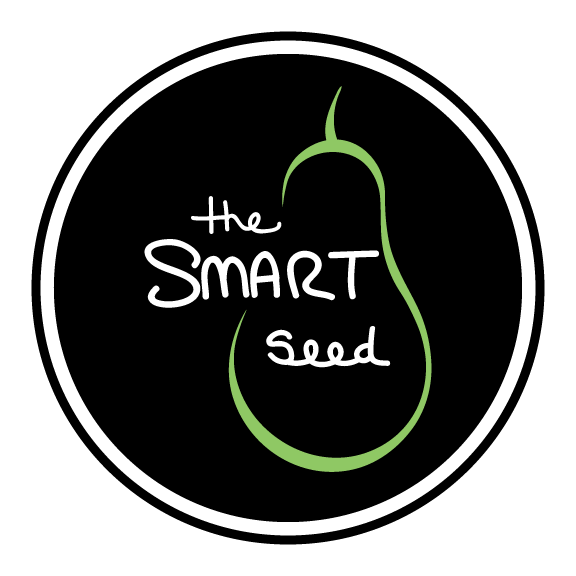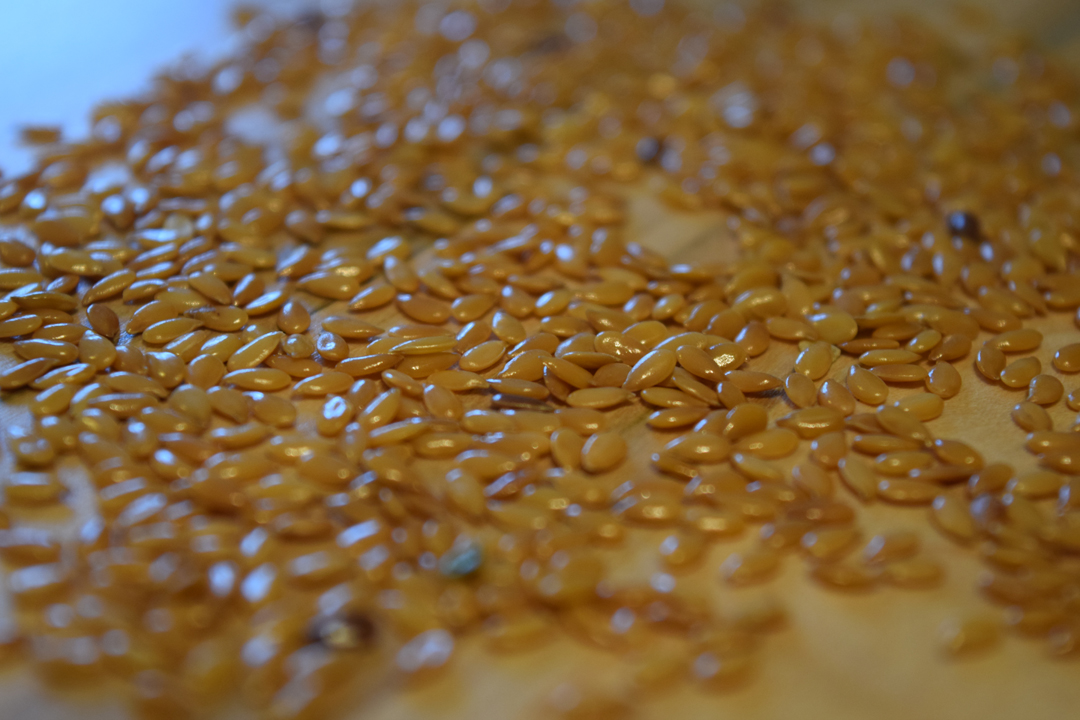Flax is a seed that is often left on the shelves. It’s plastic wrap covered in a film of dust and its expiry date itching closer to the discount bin. Flax seed is not exotic, at least not perceived as exotic. It does not originate from the dark depths of the Amazon, nor does it reveal the health secrets of secluded tribes. The story of flax is old, no, it’s ancient. It is familiar and yet unknown. Our disconnect with flax as food is perhaps due to the fact that flax has really never been used as “food” per say. It has not sustained us like rice, wheat, and potatoes. No, flax is oil and flax is textiles.
From the Neolithic age to the Roman era (approximately 10 000 BC to 500 AD) flax was an integral winter crop, second only to wheat and barley, for the people of the Levant or the Fertile Crescent. A geographical area that spans from Egypt in the west to Iraq in the east. During this time flax was primarily grown for its fiber for use in textiles. Another word for flax is linseed which is derived from its Latin name, Linum Usitatissimum. The fiber of the linseed straw is what is used to process linseed into linen. Although less popular, flax was also used for its seeds which was processed into oil. Flax oil was as ubiquitous as its fiber, used medicinally as well as industrially,
“the oil was used for cooking, lamp oil, and to protect water buffalo [and humans] against insects and cracked skin.”
It is also suggested that an inedible form of the oil was used as a lubricant as a means to help ancient Egyptians drag stones from quarries or place statues in position. It was used in building wooden furniture and ships, and in preserving a wide variety of leather goods. Medicinally, it was used as a poultice to relieve inflammation and added to honey for coughs. Women styled their hair with flax oil and Egyptians anointed themselves with the oil before leaving their homes.
Flax as food; however, was famine food for the poor. In northern Italy, during the Greco-Roman era peasants ate porridge made out of ground flax or roasted flax seeds and ate it with honey, and that’s about it. Versatile food staple? Not really. Delicious? Ummm.
If there is an argument for one to consider ground flax or flax oil (Whole flax seeds must be grounded up or in oil form in order for our bodies to digest it properly.) in one’s eating routine it is that, well, it’s good for you. Warning! The narrative of this article has forced me into a figurative corner, although I am literally writing in a corner, in which I must write down the words of science and health in order to proceed. I extend my absolute apologies. You see, flax contains high concentrations of a-linolenic acid, and this acid is an omega-3 fatty acid, which is essential to our health and well being. As humans, we do not produce a-linolenic acid, rather, we must depend on our diet to integrate the acid into our bodies. Omega-3 fatty acids are an integral part of our cell membranes and affect the function of the cell receptors in these membranes. That’s all the science and health jargon I could muster. The only other seed that comes close to containing as much omega-3 fatty acids as flax does, is the exotic chia seed. However, in a cost comparison analysis, flax seed, is currently quite a bit cheaper than chia seeds, and, therefore, the more prudent choice. As well, choosing flax seed over other sources of omega-3–seafood and omega-3 labeled eggs and milk–is the most environmentally sound choice for there is a lower environmental footprint in choosing to eat the seed over the former. Sidebar. Have you ever wondered how they get omega-3 eggs? They feed the chickens flax! Who would have thunk it?
In many ways nothing much has changed in regards to how we use flax today compared to centuries ago. With the rise of cheaper textiles linen has become less popular, however, flax is still used industrially in paints, linoleum flooring, etc. As for that bag of flax in the discount bin, if you want a cost-effective source of omega-3 then go for it. Just start with low expectations. It is something you can add to, but flax can rarely be the star of your recipe. I suggest you buy whole flax seeds and grind them at home, for once the seeds are grounded the shelf life decreases. As well, for goodness sake, don’t turn flax into a fad! During our Neolithic era farmers would wait five or six years before replanting flax in order to maintain fertility in the soil. Flax maybe good for our bodies, but it takes a toll on our soil.

